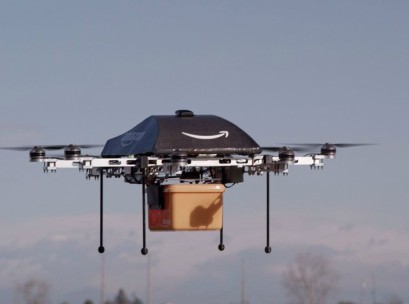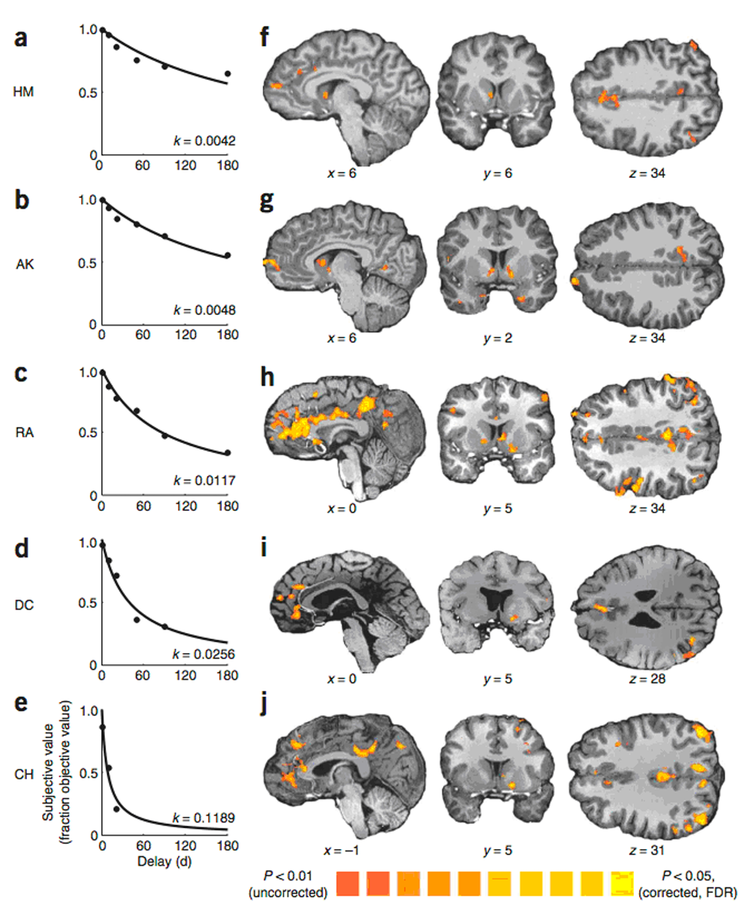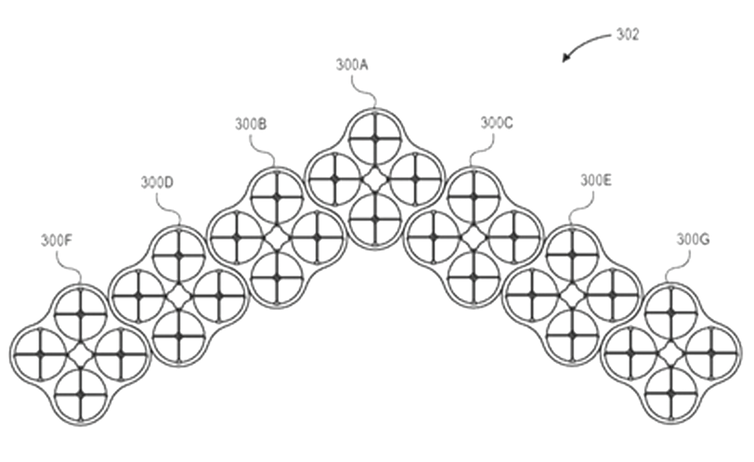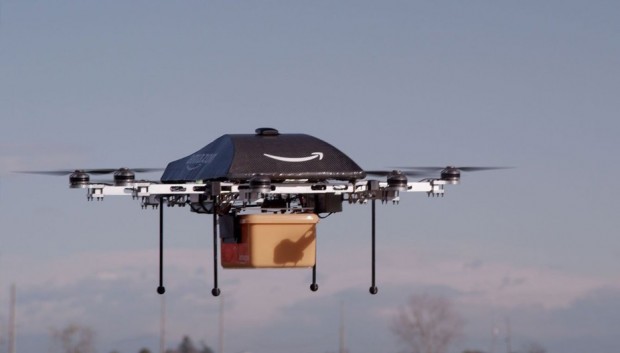 Author Postdoctoral Fellow in Neuroeconomics, Centre national de la recherche scientifique (CNRS)
Author Postdoctoral Fellow in Neuroeconomics, Centre national de la recherche scientifique (CNRS)
On July 25, 2016, while countries including the United States were still expressing regulatory misgivings, the British government graciously gave Amazon.com access to the UK’s airspace. The stated goal was to explore the practical issues involved in delivering parcels using “unmanned aerial vehicles” – more commonly known as drones. Less than five months later, on December 7, history was made: a man in Cambridge, England, made an online purchase of an Amazon Fire TV and a bag of popcorn. Within thirteen minutes a fully autonomous drone carrying both items arrived at his home. While it may not sound like much, this marks the beginning of a transformation, not just of our skies, but also of our ability to make informed consumer choices.
This was the first delivery from Amazon’s Prime Air, which aims to get packages to customers in less than 30 minutes using drones. It’s currently in the early stages of development, but over the next few months Amazon hopes to make it available to hundreds of customers within the Cambridge area. Given the speed of their progress, it is not difficult to imagine, in the not-too-distant future, fleets of automated drones delivering parcels to the grateful hands of thousands of customers all over the UK.
Drones far and wide
So what is holding back other countries from allowing delivery drones in their airspace? Is the UK the only country progressive and generous enough to loosen their regulations so that we consumers can be spared the misery of having to wait for more than 30 minutes to receive our purchases? Other than the obvious safety concerns (having swarms of automated drones flying over populated areas), labour concerns (the number of drivers’ jobs that would be lost), or environmental concerns (threats to local wildlife, noise pollution), delivery drones are a great idea, right?
Even if these many issues could somehow be addressed, looking at the impact of delivery drones from a human behavioural perspective, I would put forward another troubling concern.
This relates to how our brains perceive time as a cost and the effect that this has on our choices. As much as we like to think the opposite, our choices, especially the consumer ones, are not completely our own. In reality they’re heavily influenced by factors that we are often completely unaware of. Our brains, as choice-making computers, are constantly seeking a path of least resistance. As a result, time and effort are computed as costs that diminish the subjective value of prospective rewards. Neuroimaging techniques can actually track how this computation of time as a cost affects the brain’s valuation of a reward, such as a chocolate bar. The signals emitted by these computations can even be measured and used to predict people’s choices.

In the natural world, preference for immediate payoffs is an adaptive and efficient strategy. For instance, a monkey might value one banana more highly than two because the single banana can be eaten immediately and two would require a waiting period. This is ecologically rational in an environment in which food is scarce. Thus, monkeys are naturally inclined to be impulsive and prefer immediate rewards even if the long-term alternative might, to us at least, seem more reasonable.
Despite the richness of resources in much of modern society, humans have not yet shaken off this same predilection for immediate gratification. And whether deliberate or not, the world we live in is increasingly set up to exploit our behavioural hard-wiring.
The dark side of instant gratification
A classic example is the cigarette. Its design exploits the huge power that the immediacy of reward delivery has on the way that our brains compute value. Much of its effectiveness in cultivating addiction lies in its ability to efficiently deliver nicotine, a powerful reward, just an instant after its use. In today’s world, these kinds of super-rapid and accessible reward-delivery systems are commonplace – smartphones are a more recent example. With the increasing ubiquity of these systems comes more immediacy and so more opportunity to make impulsive choices. These are the potentially damaging choices over which we have diminished self-control and are, from a purely economic perspective, irrational.
In retail, impulsive choices are encouraged because they lead to the most coveted of consumer purchases, impulse buys. Depending on the product, they make up to anywhere from 40 per cent to 80 per cent of purchases. The essence of an impulse buy is that it satisfies immediate desires and, so, unsurprisingly, the ability to immediately gratify is a powerful tool that “brick and mortar” retailers use to lure shoppers into making impulse buys.
Yet with current delivery methods, Amazon cannot provide anything close to this immediacy. Enter the drone. In the same way that the cigarette revolutionised the way people consume nicotine, the drone will have a similar impact on how people consume, well, pretty much anything that can be bought. Or at least anything that can be carried by a small drone. That is, until Amazon release their “mega drone” convoys into the skies capable of carrying objects as heavy as a sofa.

A product delivered by drone is thus one that has been stripped of the computational costs that usually hold us back from being completely impulsive. Minimal effort, minimal time. Click and you shall receive. When rewards are delivered in this way, it is extremely difficult for our brains to refuse them.
Couple this with an endless stream of tempting images delivered to our screens of the products deemed to be the ones we most desire at that given moment, as determined by the marketing algorithms monitoring our online behaviour, and we have a perfect recipe for diminished self-control and subsequent impulse buys. This is a system with which a passing temptation, provoked by an ad, no longer has to pass. Instead, with the click of a mouse, it can be almost instantly satiated.
The only cost to consider, of course, is the price. And the quicker Amazon can deliver their products, the higher you perceive their value, and so, the more they can charge. The price we are willing to pay is directly related to the reduction of these other costs – time and effort in particular – that our brain instinctively computes before making a choice. Retailers are well aware of this tendency, considering the millions of UK customers who are willing to pay Amazon £7.99 per month for their Prime status. This extra cost does not enhance a product in any way, it merely gets it to its recipient quicker than it normally would.
Fewer constraints, more impulse buys
So perhaps it is the lure of this double boost – more impulse buys and higher prices – that explains the eagerness with which online retailers are to press ahead with drone delivery despite the regulatory obstacles that currently stand in their way. But why might the UK government be willing to clear the path for Amazon? Given that the country currently has one surveillance camera for every 11 people and has recently legalised “the most extreme surveillance in the history of western democracy”, the prospect of filling the skies with thousands of flying robots equipped with cameras might sound attractive. Drones might also encourage UK citizens to become even greater consumers and thus boost an economy that relies heavily on consumer spending. That the profits would go to a giant multinational notorious for tax avoidance is another issue, as is the fact that delivery drones would pose a threat to those who are already vulnerable to impulsive shopping, overspending and poverty.
But the drone is not the villain here. It’s merely a highly advanced instrument whose design and function is wholly determined by the intentions of its human minders. For instance, some companies are developing drones that could deliver medical supplies to remote locations or to people with mobility issues. In a parallel universe, where the UK government values public institutions like the NHS as much as its people do, perhaps regulations are being loosened so that investments could be made in systems that contribute to social progress and not just economic growth.






